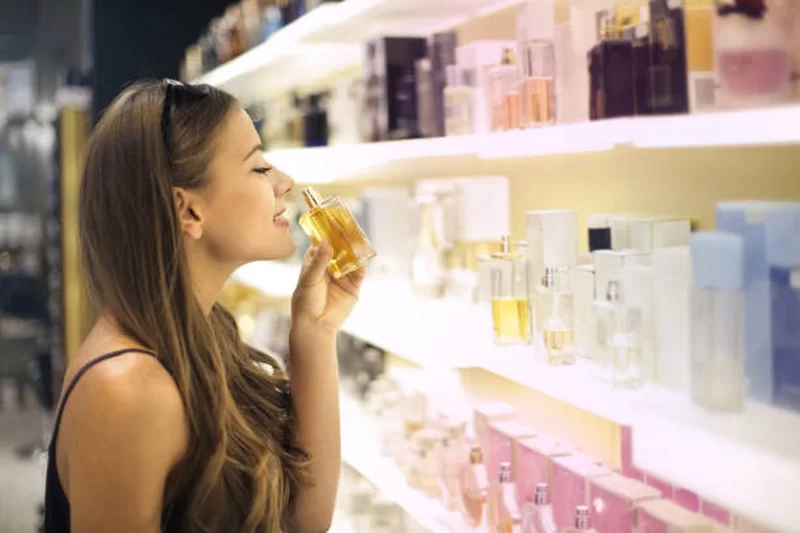In the realm of retail, barcodes assume a critical part in overseeing stock and deals. With regards to the perfume business, the utilization of barcodes is similarly critical for following items, overseeing stock, and guaranteeing smooth exchanges. This article delves into the meaning of codigo de barras perfume business, investigating their part in item identification, store network the executives, and shopper wellbeing.
The Role of Barcodes in Perfume Industry
Importance of Código de Barras in Perfume Manufacturing
Barcodes, otherwise called “codigo de barras perfume” in Spanish, are fundamental in the perfume producing process. Every scent requires a special identifier to separate it from others on the lookout. Barcodes provide a normalized strategy for encoding this data, permitting makers to follow creation, oversee stock, and work with dispersion. By relegating a particular barcode to each perfume, makers can smooth out their tasks and guarantee exact naming and bundling.
Moreover, barcodes empower consistent joining with mechanized frameworks, like stock administration programming and retail location terminals. This coordination upgrades productivity and precision all through the creation and appropriation processes, at last helping the two makers and buyers.
Advantages of Involving Código de Barra in Perfume Retail
For retailers, the utilization of “codigo de barras perfume” in perfume items offers various benefits. By checking barcodes, retailers can rapidly get to item data, including evaluating, stock levels, and termination dates. This continuous perceivability into stock forestalls stockouts and overloading, upgrading the store network and further developing consumer loyalty.
Besides, barcodes work with quicker checkout processes, lessening sitting tight times for clients and upgrading by and large shopping encounters. With precise item identification and valuing, retailers can limit blunders and errors at the retail location, prompting smoother exchanges and worked on functional effectiveness.
Table 1: Example of Barcode Types Used in Perfume Industry
| Barcode Type | Description |
|---|---|
| UPC | Universal Product Code, widely used in North America |
| EAN | European Article Number, prevalent in Europe and other regions |
| QR Code | Quick Response Code, capable of storing more data than traditional barcodes |
Implementing Barcodes in Perfume Products
Incorporating Barcodes in Perfume Packaging
With regards to consolidating barcodes in perfume bundling, producers should consider factors like mark situation, size, and comprehensibility. The barcode ought to be effectively searchable by retail scanners and cell phones, guaranteeing consistent item identification and following all through the production network.
Moreover, the design and feel of the barcode ought to supplement the general bundling of the perfume, keeping up with brand consistency while satisfying useful prerequisites. By coordinating barcodes insightfully into the bundling design, makers can accomplish a harmony between visual allure and reasonableness, upgrading the item’s attractiveness and purchaser request.
Guaranteeing Administrative Consistence and Customer Security
In the perfume business, administrative consistence and customer security are foremost considerations while executing barcodes. Makers should comply with naming guidelines and norms set out by administering bodies to guarantee that barcodes precisely pass on fundamental item data, including fixings, allergens, and clump numbers.
By encoding important details inside the barcode, for example, fabricating date and cluster number, makers can improve discernibility and review capacities, adding to buyer security and item straightforwardness. Also, barcodes empower specialists and stakeholders to follow and check the validness of perfumes, moderating the dangers related with fake items.
- Regulatory Requirements: Ensure compliance with labeling regulations and industry standards.
- Packaging Integration: Integrate barcodes seamlessly into perfume packaging without compromising aesthetics.
- Consumer Information: Encode essential product details within the barcode to enhance transparency and safety.
Barcode Technology and Innovation in the Perfume Industry
Advancements in Barcode Scanning Technologies
Lately, mechanical progressions have altered barcode filtering capacities, offering upgraded speed, exactness, and adaptability. In the perfume business, these developments have converted into further developed stock administration, smoothed out coordinated factors, and better extortion anticipation.
One striking development is the widespread reception of portable barcode examining applications, engaging retailers and buyers to get to item data in a hurry. This availability works with item check as well as supports advertising drives, for example, intuitive advancements and steadfastness programs, utilizing barcode innovation to straightforwardly draw in with shoppers.
Utilizing Information Investigation and Bits of knowledge from Barcodes
Past fundamental item identification, barcodes act as significant wellsprings of information that can be utilized for business insight and decision-production. By dissecting barcode-examined information, perfume makers and retailers can acquire bits of knowledge into shopper inclinations, buying designs, and local demand patterns.
This information driven approach empowers organizations to streamline their item arrangements, tailor showcasing procedures, and conjecture stock necessities all the more precisely. Besides, by outfitting barcode-derived bits of knowledge, organizations can identify potential open doors for item advancement and vital associations, driving development and seriousness in the powerful perfume market.
Table 2: Impact of Barcode Innovations in Perfume Industry
| Innovation | Impact |
|---|---|
| Mobile Scanning Apps | Enhanced consumer engagement, on-the-go product verification, and interactive promotions |
| Data Analytics Insights | Informed decision-making, optimized product assortments, and targeted marketing efforts |
| Advanced Fraud Prevention | Improved security measures, reduced counterfeit risks, and enhanced consumer trust |
FAQs about Barcodes in the Perfume Industry
What are the primary types of barcodes used in the perfume industry?
- The essential kinds of barcodes utilized in the perfume business include General Item Code (UPC), European Article Number (EAN), and Fast Reaction (QR) codes. These barcodes are widely perceived and work with worldwide item identification and following.
How do barcodes contribute to consumer safety in the perfume industry?
- Barcodes empower makers to encode fundamental item data, like fixings, allergens, and cluster numbers, furnishing buyers with straightforward and precise details about the perfumes they buy. This adds to buyer wellbeing by improving item discernibility and legitimacy check.
What role do barcodes play in combating counterfeit perfumes?
- Barcodes assume a pivotal part in fighting fake perfumes by empowering specialists and stakeholders to follow and confirm the realness of items. By encoding one of a kind identifiers and clump numbers, barcodes assist with recognizing certifiable perfumes from fake ones, subsequently shielding purchaser trust and brand honesty.
How do advancements in barcode technology benefit the perfume industry?
- Headways in barcode innovation offer advantages like better stock administration, smoothed out planned operations, and upgraded misrepresentation avoidance. Also, developments like portable checking applications and information examination engage organizations to draw in with shoppers, gain significant bits of knowledge, and settle on informed choices to drive development and seriousness.
What considerations should perfume manufacturers keep in mind when implementing barcodes in their products?
- Perfume makers ought to focus on administrative consistence, consistent bundling combination, and encoding fundamental item details inside barcodes to guarantee straightforwardness and customer wellbeing. Furthermore, they ought to keep up to date with barcode innovation progressions to use creative answers for business advancement.
Conclusion
In the dynamic and cutthroat perfume industry, the utilization of barcodes, or “codigo de barras perfume,” is essential for makers, retailers, and buyers the same. From smoothing out creation cycles to upgrading shopper wellbeing and commitment, barcodes assume a diverse part in driving productivity, straightforwardness, and development. As innovation keeps on developing, the perfume business stands to profit from continuous headways in barcode innovation, making ready for improved functional greatness and enhanced shopper encounters.




